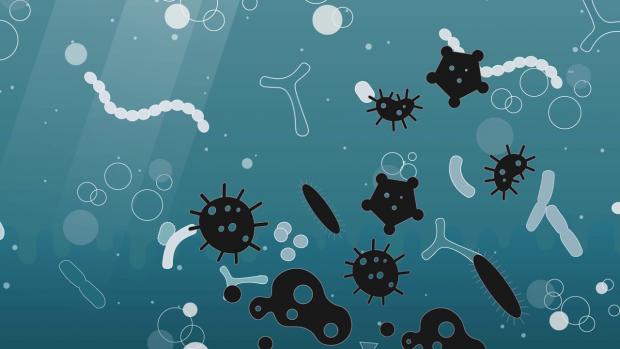
Breaking News
 Top news analysis, Green Tea miracles and a new interview with Col. Douglas Macgregor...
Top news analysis, Green Tea miracles and a new interview with Col. Douglas Macgregor...
 Cayenne pepper: The fiery superfood with a healing kick
Cayenne pepper: The fiery superfood with a healing kick
 Walmart Heiress Opens Medical School with a Focus on Preventative Medicine
Walmart Heiress Opens Medical School with a Focus on Preventative Medicine
 Not all probiotics are created equal – some help gut recovery, others harm
Not all probiotics are created equal – some help gut recovery, others harm
Top Tech News
 NASA's X-59 'quiet' supersonic jet rolls out for its 1st test drive (video)
NASA's X-59 'quiet' supersonic jet rolls out for its 1st test drive (video)
 Hypersonic SABRE engine reignited in Invictus Mach 5 spaceplane
Hypersonic SABRE engine reignited in Invictus Mach 5 spaceplane
 "World's most power dense" electric motor obliterates the field
"World's most power dense" electric motor obliterates the field
 The Wearables Trap: How the Government Plans to Monitor, Score, and Control You
The Wearables Trap: How the Government Plans to Monitor, Score, and Control You
 The Streetwing: a flying car for true adventure seekers
The Streetwing: a flying car for true adventure seekers
Magic mushrooms may hold the secret to longevity: Psilocybin extends lifespan by 57%...
 Unitree G1 vs Boston Dynamics Atlas vs Optimus Gen 2 Robot– Who Wins?
Unitree G1 vs Boston Dynamics Atlas vs Optimus Gen 2 Robot– Who Wins?
 LFP Battery Fire Safety: What You NEED to Know
LFP Battery Fire Safety: What You NEED to Know
 Final Summer Solar Panel Test: Bifacial Optimization. Save Money w/ These Results!
Final Summer Solar Panel Test: Bifacial Optimization. Save Money w/ These Results!
 MEDICAL MIRACLE IN JAPAN: Paralyzed Man Stands Again After Revolutionary Stem Cell Treatment!
MEDICAL MIRACLE IN JAPAN: Paralyzed Man Stands Again After Revolutionary Stem Cell Treatment!
Not all probiotics are created equal – some help gut recovery, others harm

Probiotics, a collection of "good bacteria" in a capsule or gummy, are commonly used to replenish the gut microbiome after a period of antibiotic treatment, which tends to knock out good and bad bacteria indiscriminately. But given the range of probiotic supplements out there, do they all have similar effects?
A new study by researchers from North Carolina State University (NC State) has investigated the effects of two common probiotic strains, Lactobacillus acidophilus and Lactobacillus gasseri, on mice that were given antibiotics and then exposed to C. difficile, the bacterium responsible for causing antibiotic-associated diarrhea.
"Colonization resistance or the ability to prevent colonization of pathogens is a function of a healthy microbiota," said Casey Theriot, PhD, professor of infectious diseases at NC State and the study's co-corresponding author. "This study looked at how long it took resistance against C. diff colonization to return after antibiotics and the impact of two of the most commonly used strains of Lactobacillus probiotic on that return."
The researchers wanted to see whether these two probiotic strains helped or harmed gut recovery and whether they could prevent C. difficile infection. Mice who'd been treated with a broad-spectrum antibiotic were divided into three groups. One group received L. acidophilus, one received L. gasseri, and a third acted as a control group, receiving no probiotic strain. Each group was administered C. difficile weekly for four weeks, and their microbiota was examined to measure bacterial load and C. difficile resistance.
Mice that received L. acidophilus had higher levels of C. difficile, more bacterial toxins, and slower recovery of gut resistance. On the other hand, mice that received the L. gasseri strain had reduced C. difficile levels, and it helped restore the gut's natural defenses more quickly. This probiotic produced a bacteriocin, a kind of potent natural antibiotic produced by bacteria, that directly inhibited the C. difficile bacterium. Interestingly, even after L. gasseri was no longer detectable in the mice's gut, its positive effects persisted.
What's more, the strain coincided with a bloom in Muribaculaceae, a potentially beneficial gut bacterial family, raising the possibility that it promoted conditions favorable to their growth. Muribaculaceae appeared to indirectly help resist C. difficile, possibly by outcompeting it for nutrients. Experiments showed that two species, Muribaculum intestinale and Duncaniella muris, can restrict C. difficile growth under laboratory conditions.
"We have always known that it's important to understand the strain-specific impact of probiotic strains," said the study's other corresponding author, Rodolphe Barrangou, PhD, Distinguished Professor in Probiotics Research in NC State's Department of Food, Bioprocessing and Nutrition Sciences. "Depending on the condition and composition of the individual's microbiome, the disease, and the probiotic strain, you will have different effects and outcomes.



